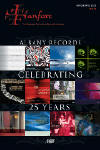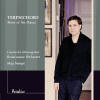Texte paru dans: / Appeared in:

Fanfare Magazine: 36:4 (03-04/2013)
Pour
s'abonner / Subscription information
Les abonnés à Fanfare Magazine ont accès aux archives du
magazine sur internet.
Subscribers to Fanfare Magazine have access to the archives of the magazine
on the net.
DG Archiv
4790377

0028947903772 (ID259)
Consultez toutes les évaluations recensées pour ce cd
~~~~ Reach all the evaluations located for this CD
Terpsichore, the 1612 collection of 300 plus dances arranged by the indefatigable Michael Praetorius, has proven a goldmine over the years to early-music ensembles, both in concert and on records. Not so the several collections of dance music created by his contemporary, William Brade, that only appears as an occasional piece on currently available albums. He gets 11 cuts out of 36 on this compilation, however, with almost all the rest going to Praetorius: Brade’s best showing since Jordi Savall and Hespèrion XX recorded an entire album of his consort music on a CD recorded in 1991, but now deleted. The mix of content on this album nicely balances popular pieces with others that go virtually unheard, and are every bit as attractive and varied in character. German and English dances predominate, but a couple, at least, have their origins clearly in French music, a couple of others suggest Silesian folk music, and at least one brings to mind an intabulation by the great Hungarian lutenist, Bálint Bakfark.
Capriccio
Stravagante is described as a “Renaissance orchestra,” and with 22
performers on everything from bowed strings to recorders to cornett and
trombone, they certainly deserve the title. Individual arrangements are
performed by recorder, brass, or viol consort, or lute and guitar, or full
ensemble with percussion—or sometimes a combination of the above, and even
with one of the smaller groups or a solo instrument leading to the full
ensemble. Yes, it’s anachronistic; a lively aristocratic party that utilized
this music in the background wouldn’t have been able to handle the shifts in
volume and intensity in this program, though a few wealthy guilds and some
of the more extravagant nobility could at least have afforded the kind of
salaries required to support this many players on occasion. Regardless, it’s
enjoyable and expertly played, with Skip Sempé preventing matters from ever
bogging down. The engineering is very forward and well balanced to suit the
broad contrasts of the orchestra. In short, this is light entertainment of
the period, served up with plenty of color and energy.
Fermer la fenêtre/Close window
Cliquez l'un ou l'autre
bouton pour découvrir bien d'autres critiques de CD
Click either button for many other reviews


